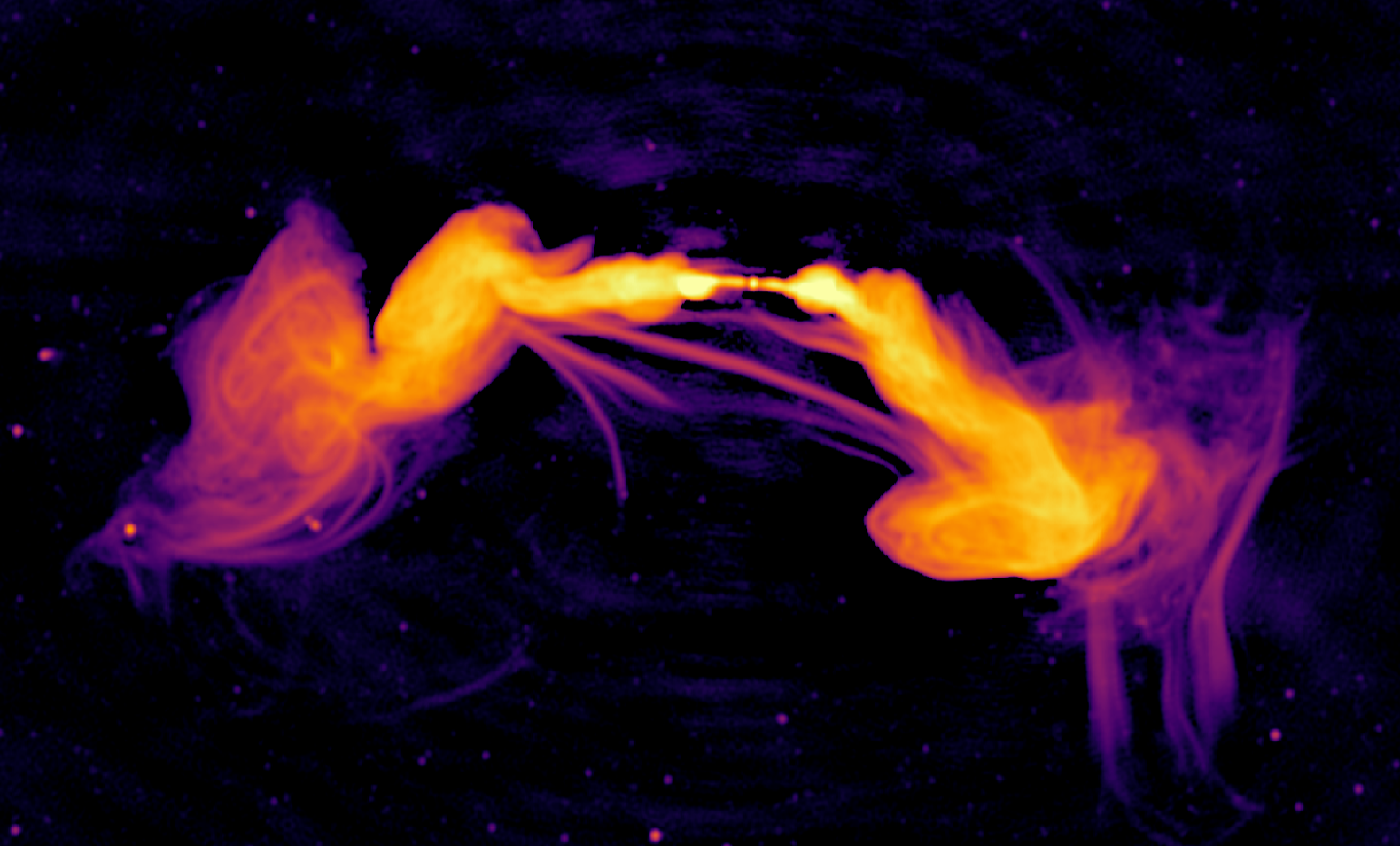Daily Image
15-04-2020Unknown unknowns: MeerKAT discovers strange filaments connecting the radio lobes of ESO 137-006
| Submitter: | Mpati Ramatsoku and co-authors |
| Description: | When dealing with data from a new telescope, one routinely expects surprises of the technical variety. But sometimes the Universe itself throws a curveball, just to remind us who’s in charge. Found near the centre of the Great Attractor, in the Norma galaxy cluster, ESO 137-006 is one of the brightest radio galaxies in the southern hemisphere. ESO 137-006 was *not* the scientific target of this observation. We were ready for it to show up as an annoyingly bright source, with nothing particularly interesting about it apart from the usual trouble of subtracting such a source accurately. The very first continuum maps immediately showed that we were dealing with something far more curious. The MeerKAT L-band map shown above, recently published in A&A https://www.aanda.org/articles/aa/abs/2020/04/aa37800-20/aa37800-20.html demonstrates some very unusual collimated synchrotron threads (CST) apparently connecting the radio emission lobes of the galaxy. The finding is, at present, rather bewildering. It is very difficult to explain why and when and how these threads could have formed, or why they are so collimated and uniform. They could be magnetically connected with particles flowing into these magnetic channels. Whatever their origin, this brings up some questions such as: how common are these features in radio galaxies? Are they specific to the case of ESO 137-006 and its environment? Or, on the contrary, are these threads common in radio galaxies, but have so far not been detected because of sensitivity and resolution limits? Or is the Universe simply playing a cosmic joke on us, and the threads are a completely unrelated feature elsewhere in the cluster, which just happens to project onto ESO 137-006 so neatly? Whatever the astrophysical causes, this image highlights MeerKAT’s exquisite sensitivity to extended low surface brightness emission. Perhaps we should start expecting such surprises more routinely. |
| Copyright: | published in A&A. Ramatsoku et al, 2020 |
| Tweet |  |
